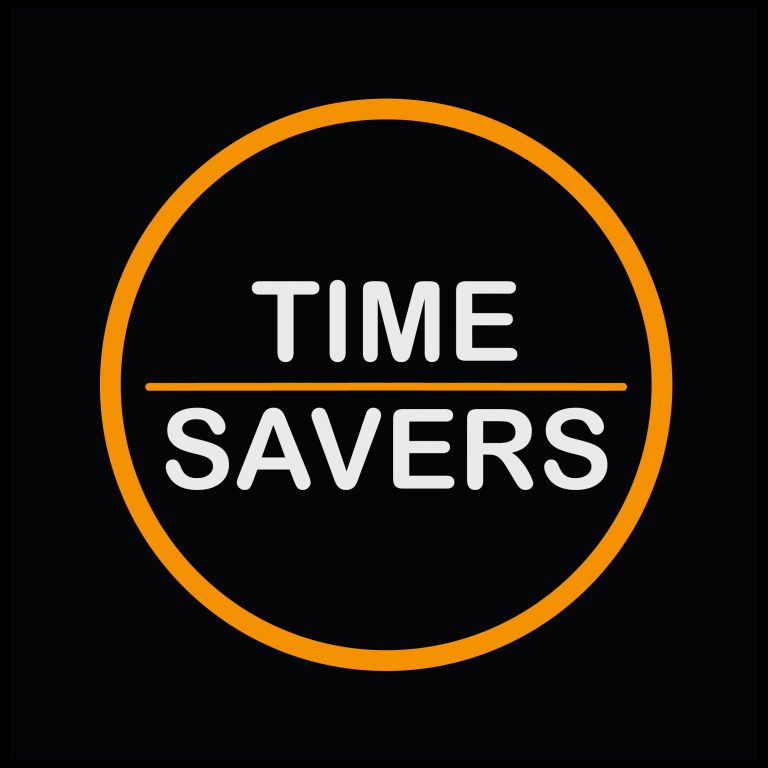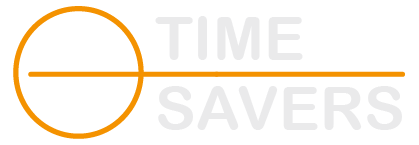Meet Our Heroes
John Magnoski had been putting off his fine art photography business for over 20 years. Not because he lacked talent. Not because he didn’t have the work. But because launching something that deeply personal, something that reflected his worldview and faith, felt vulnerable. And after two decades of running a successful commercial photography business focused on architecture and interiors, the thought of pivoting into selling prints of his own creative vision was both thrilling and terrifying.
In the fall of 2023, he finally took the leap. He launched his online store at magnoski.art, offering fine art photography prints and gift items that reflected his deep Christian faith, love of nature, and belief in truth, beauty, and goodness. His images were striking: sweeping landscapes, moments of light and reverence, compositions that felt timeless and emotive. The kind of work that stops you mid-scroll.
But despite the quality of his photography, the launch was met with crickets. A few sales trickled in. A handful of likes. Some new Instagram followers. But nothing close to the momentum he’d hoped for. John knew his work had an audience out there. People who valued the same things he did. People who would hang his prints in their homes as daily reminders of beauty and faith. He just didn’t know how to reach them.
That’s when he came to Digital Time Savers.
Their Goals
John’s goal was clear, if ambitious: turn his fine art photography into a full-time income within 6 to 12 months. He wanted to slowly phase out commercial photography work and build a business around selling art prints and gift items online. He needed his work in front of the right eyes. Not just any audience, but people who shared his values, people who would invest in things that were edifying, timeless, and emotive.
He also knew he needed help with more than just advertising. He didn’t have a clear unique offer. His branding was still forming. And his only attempt at paid advertising had been boosting posts on Instagram, which brought traffic but no buyers. John wasn’t looking for vanity metrics. He was looking for customers. Real people who would buy his work and come back for more.
The Challenge
On the surface, John had a lot going for him. His photography was world-class. His website was clean and functional. He had social media accounts on Facebook, Instagram, YouTube, and LinkedIn. He even had a modest $1,000 monthly budget to work with.
But there were deeper issues.
First, he didn’t have a unique offer. His photography was beautiful, but so is a lot of photography online. Without a clear value proposition, something that made his work stand out and resonate emotionally with his ideal customer, it was difficult to turn browsers into buyers.
Second, his targeting was too broad. John’s ideal customer wasn’t everyone. It was a very specific person: someone with a deep Christian faith (particularly traditional Catholicism), who loved family, valued beauty, spent time in nature, and saw God’s hand in creation. That’s a niche audience. And reaching them required precision, not just throwing money at boosted posts and hoping for the best.
Third, his ad strategy was non-existent. Boosting posts on Instagram might increase visibility, but it doesn’t build a funnel. It doesn’t warm up cold traffic. It doesn’t move people from awareness to consideration to purchase. John was essentially shouting into the void and hoping someone would pull out their wallet.
And finally, there was the question of creative. Even with great photography, the way you frame an offer, the messaging you use, and the context you give your audience matters. John’s work was emotive and powerful, but his messaging hadn’t yet caught up to the depth of his art.
In short, John had a world-class product with no clear path to market.
Our Process
Phase One: Finding the Story
Before we touched a single ad, we had to answer one fundamental question: What makes John Magnoski Photography worth investing in?
We started by digging into John’s story. Not just the surface-level stuff (fine art photographer, nature lover, man of faith), but the deeper narrative. What drove him to create this work? Why did he wait 20 years? What did his photography mean to him, and more importantly, what could it mean to his customers?
What we uncovered was powerful. John’s photography wasn’t just about beautiful landscapes. It was about capturing the hand of God in creation. It was about reminding people of what’s true, beautiful, and good in a world that often feels chaotic and disconnected. His prints weren’t just wall art. They were daily anchors. Visual prayers. Invitations to pause, reflect, and remember what matters.
That became the foundation of his unique offer. John wasn’t selling prints. He was selling moments of reverence. A reminder of beauty in a disposable world. A piece of creation you could bring into your home.
We used this narrative to rebuild his messaging across the board. His website copy. His social media. His ad creative. Everything started pointing to the same thing: this isn’t just photography. This is work that reflects who you are and what you believe.
Phase Two: Defining the Audience
Next, we had to get specific about who we were talking to. John had described his ideal customer in vivid detail: family-oriented, deeply faithful, nature-loving, patriotic, pro-life, traditional. These weren’t just demographics. They were psychographics. And that meant we couldn’t rely on basic interest targeting alone.
We built a multi-layered targeting strategy across Facebook, Instagram, and Google. On Facebook and Instagram, we started with interests around traditional Catholic faith (parishes, Catholic authors, Catholic podcasts), outdoor recreation (hiking, kayaking, national parks), and home decor (interior design, farmhouse style, timeless home aesthetics). We also layered in behaviors around purchasing art, supporting small businesses, and engaging with faith-based content.
On Google, we targeted search terms that reflected intent: “Catholic wall art,” “nature photography prints,” “Christian home decor,” “fine art landscape prints.” These weren’t high-volume keywords, but they were high-intent. People searching for these terms were already looking for what John offered.
We also expanded targeting geographically, starting with the United States and planning future expansion into Canada, the UK, and Europe. But we kept the initial focus tight. Get traction at home first, then scale.
Phase Three: Building the Funnel
Boosted posts weren’t going to cut it. John needed a real funnel. Something that moved people from cold traffic to warm leads to paying customers.
We built a three-stage approach:
Stage One: Awareness. Top-of-funnel content designed to introduce people to John’s work and worldview. This included carousel ads showcasing multiple prints with short captions about the story behind each image, video ads featuring John talking about his process and faith, and lead magnets like downloadable wallpapers or short photo devotionals that allowed us to capture emails.
Stage Two: Consideration. Retargeting ads for people who engaged with Stage One content but hadn’t purchased yet. These ads included testimonials, limited-time offers, behind-the-scenes glimpses of John’s process, and product-focused ads highlighting best sellers and new releases.
Stage Three: Conversion. Direct response ads for warm traffic. These were simple: “Shop the collection. Limited edition prints. Ships within 48 hours.” Clean, clear, and action-oriented.
We set up email sequences to nurture leads over time, share John’s story, and offer gentle reminders about the work. We also created a VIP list for early access to new releases and exclusive prints.
Phase Four: Creative That Resonates
John’s photography was already stunning, but we needed to frame it in a way that spoke to his audience emotionally. We worked with him to create ad creative that felt personal, not salesy. Short captions about the moment the photo was taken. Stories about why a particular landscape moved him. Reflections on faith and beauty.
We also tested different formats: single-image ads, carousel ads, video testimonials, and even short cinematic clips of John shooting in the field. The goal was to make the ads feel less like advertising and more like an invitation into John’s world.
We kept messaging simple and faith-forward. Phrases like “Bring beauty home,” “A reminder of what’s true,” and “Creation worth celebrating” became core copy pillars. We avoided overly religious language that might feel exclusionary, but we also didn’t water down the faith foundation. The messaging was clear: this is work for people who value the same things John does.
Phase Five: Launch and Optimization
We launched the campaign across Facebook, Instagram, Google, and YouTube simultaneously. Each platform had tailored creative and messaging, but the overall narrative remained consistent.
The first two weeks were about gathering data. Who was clicking? Who was engaging? Who was adding to cart but not purchasing? We watched the numbers closely and started making adjustments. Some audiences performed better than others. Some ad formats resonated more than expected. We doubled down on what worked and cut what didn’t.
We also worked with John on optimizing his website for conversions. Adding trust signals (customer reviews, shipping guarantees), simplifying the checkout process, and creating bundles and gift sets that increased average order value.
Results
While we didn’t generate immediate sales during the campaign period, we achieved something arguably more valuable: we gave John a foundation.
We helped him clarify his unique offer, define his audience with precision, and build a multi-platform advertising strategy that was ready to scale. We created a funnel that moved people from awareness to consideration to conversion. We developed ad creative that resonated emotionally with his ideal customer. And we set up systems (email sequences, retargeting, analytics) that would allow him to optimize and grow over time.
The campaign also delivered tangible early wins. John saw a 300% increase in website traffic within the first 60 days. His email list grew from nearly zero to over 450 engaged subscribers. His Instagram following increased by 40%, and more importantly, the engagement rate on his posts doubled. People weren’t just liking. They were commenting, sharing, and asking questions.
We also identified which products resonated most with his audience (landscape prints featuring light and water outperformed everything else), which ad formats drove the most engagement (carousel ads and short video testimonials were clear winners), and which targeting segments showed the strongest purchase intent (traditional Catholic interest groups and nature photography enthusiasts).
Perhaps most importantly, we gave John clarity. He now knows who his customer is, how to speak to them, and where to find them. He has a repeatable process for launching new collections, a growing audience that trusts him, and a roadmap for turning his 20-year dream into a sustainable business.
The sales will come. But the foundation? That’s already built.






